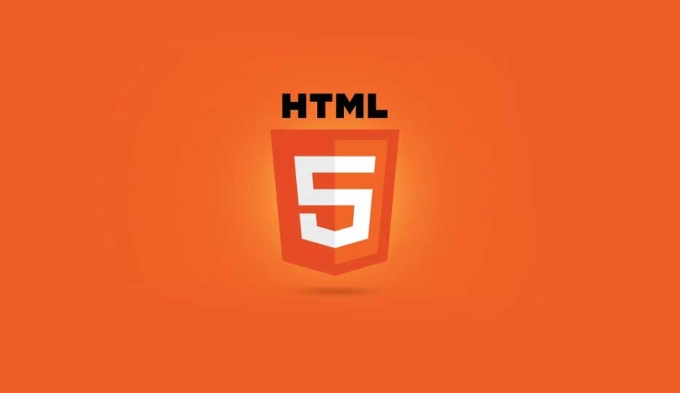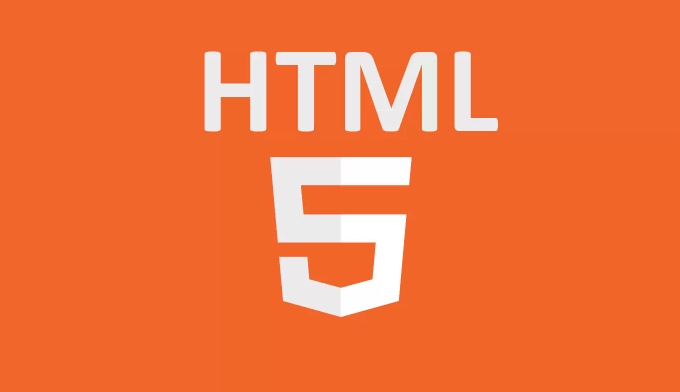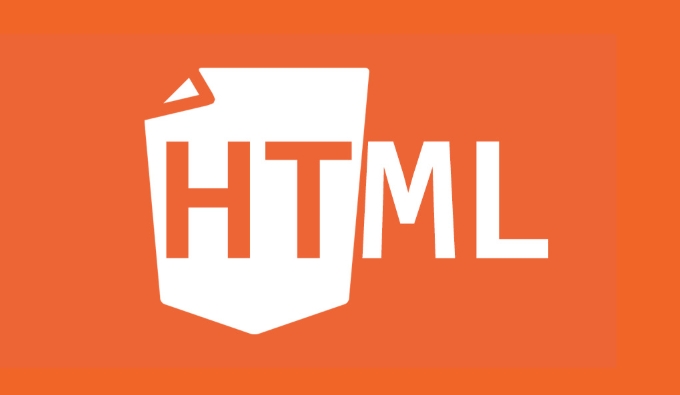Font optimization is crucial to H5 page performance and reading experience. First, use the WOFF2 format to prioritize the selection, use tools to generate multi-format font packages and load common font weights as needed, and Chinese fonts should be subset to reduce volume; second, control the font types in 1 to 2 types, use the cropping tool to retain common characters, combine the system font and font-display: swap strategy to speed up rendering; finally, improve readability, pay attention to the font size not less than 16px, line height 1.4 to 1.6 times, and the contrast ratio is at least 4.5:1, avoid fine fonts and low contrast color matching, and use font weight reasonably to prevent blur.

Font optimization is often easily overlooked when loading a web page. But in fact, the font selection and usage method in the H5 page will directly affect the performance and reading experience. Especially on mobile devices, slow loading or blurred text will affect user retention.

Select the right font format to improve loading efficiency
Currently, the mainstream web font formats include WOFF2, WOFF, TTF, EOT, SVG, etc. Among them, WOFF2 is the first choice, it has high compression rate and good compatibility. If you are still using TTF or EOT, it is recommended to convert to WOFF2 format first.
Some common optimization practices:

- Generate multi-format font packages using Font Squirrel or online conversion tools
- Do not load the entire set of fonts at once (such as including all thicknesses) and load common word weights as needed.
- Especially important for Chinese fonts, full loading will be very slow, subsetting can be considered
Although Google Fonts is convenient, it loads slowly in China. If it is not for overseas users, use it with caution.
Control font size and quantity to avoid slowing down pages
There should not be too many types of fonts used on a page, generally 1 to 2 types are enough. Every time a font is added, the browser will request resources more, which will affect the loading speed if accumulated.

The font file itself also has size restrictions. It’s okay to use English, but it’s a few MB or even dozens of MB in Chinese. You can control it like this:
- Use the font cropping tool to retain only common characters
- Use the system default font as a fallback solution to speed up first rendering
- Set
font-display: swap, let the text be displayed in the default font first, and then replaced after the custom font is loaded.
For example, if you use Siyuan bold, if you do not do cropping, the full version will be loaded by default, which may exceed 5MB. If you just display the title, you can cut out commonly used Chinese characters and press the volume to within a few hundred KB.
Improve readability: Font size, line height and contrast should not be careless
A good font does not mean it is easy to read. Especially on mobile phone screens, small font-sized, low-contrast text can easily make users squint.
Several practical suggestions:
- The main text is recommended to be 16px or above , and the title is appropriately enlarged
- Keep the height between 1.4 and 1.6 times , and don't be too crowded
- The font color and background must have sufficient contrast, reaching at least 4.5:1
- Avoid using too thin fonts, especially against light backgrounds
For example: A light gray thin font on a white background looks "advanced", but long-term reading can make people tired of eyes. If you change to dark gray or black, the visual pressure will be much less.
In addition, be careful not to abuse font-weight . Some fonts do not support too much font weight. Forced settings may cause the browser to simulate bold, which will affect the clarity.
Basically that's it. Font optimization is not as intuitive as pictures, but its impact on overall performance and user experience cannot be ignored. Spend more time on details and the page will perform more stably and friendly.
The above is the detailed content of Optimizing H5 Fonts for Performance and Readability. For more information, please follow other related articles on the PHP Chinese website!

Hot AI Tools

Undress AI Tool
Undress images for free

Undresser.AI Undress
AI-powered app for creating realistic nude photos

AI Clothes Remover
Online AI tool for removing clothes from photos.

Clothoff.io
AI clothes remover

Video Face Swap
Swap faces in any video effortlessly with our completely free AI face swap tool!

Hot Article

Hot Tools

Notepad++7.3.1
Easy-to-use and free code editor

SublimeText3 Chinese version
Chinese version, very easy to use

Zend Studio 13.0.1
Powerful PHP integrated development environment

Dreamweaver CS6
Visual web development tools

SublimeText3 Mac version
God-level code editing software (SublimeText3)
 Using ARIA attributes with HTML5 semantic elements for accessibility
Jul 07, 2025 am 02:54 AM
Using ARIA attributes with HTML5 semantic elements for accessibility
Jul 07, 2025 am 02:54 AM
The reason why ARIA and HTML5 semantic tags are needed is that although HTML5 semantic elements have accessibility meanings, ARIA can supplement semantics and enhance auxiliary technology recognition capabilities. For example, when legacy browsers lack support, components without native tags (such as modal boxes), and state updates need to be dynamically updated, ARIA provides finer granular control. HTML5 elements such as nav, main, aside correspond to ARIArole by default, and do not need to be added manually unless the default behavior needs to be overridden. The situations where ARIA should be added include: 1. Supplement the missing status information, such as using aria-expanded to represent the button expansion/collapse status; 2. Add semantic roles to non-semantic tags, such as using div role to implement tabs and match them
 Integrating CSS and JavaScript effectively with HTML5 structure.
Jul 12, 2025 am 03:01 AM
Integrating CSS and JavaScript effectively with HTML5 structure.
Jul 12, 2025 am 03:01 AM
HTML5, CSS and JavaScript should be efficiently combined with semantic tags, reasonable loading order and decoupling design. 1. Use HTML5 semantic tags, such as improving structural clarity and maintainability, which is conducive to SEO and barrier-free access; 2. CSS should be placed in, use external files and split by module to avoid inline styles and delayed loading problems; 3. JavaScript is recommended to be introduced in front, and use defer or async to load asynchronously to avoid blocking rendering; 4. Reduce strong dependence between the three, drive behavior through data-* attributes and class name control status, and improve collaboration efficiency through unified naming specifications. These methods can effectively optimize page performance and collaborate with teams.
 HTML5 video not playing in Chrome
Jul 10, 2025 am 11:20 AM
HTML5 video not playing in Chrome
Jul 10, 2025 am 11:20 AM
Common reasons why HTML5 videos don't play in Chrome include format compatibility, autoplay policy, path or MIME type errors, and browser extension interference. 1. Videos should be given priority to using MP4 (H.264) format, or provide multiple tags to adapt to different browsers; 2. Automatic playback requires adding muted attributes or triggering .play() with JavaScript after user interaction; 3. Check whether the file path is correct and ensure that the server is configured with the correct MIME type. Local testing is recommended to use a development server; 4. Ad blocking plug-in or privacy mode may prevent loading, so you can try to disable the plug-in, replace the traceless window or update the browser version to solve the problem.
 Using HTML5 Semantic Elements for Page Structure
Jul 07, 2025 am 02:53 AM
Using HTML5 Semantic Elements for Page Structure
Jul 07, 2025 am 02:53 AM
Using HTML5 semantic tags can improve web structure clarity, accessibility and SEO effects. 1. Semantic tags such as,,,, and make it easier for the machine to understand the page content; 2. Each tag has a clear purpose: used in the top area, wrap navigation links, include core content, display independent articles, group relevant content, place sidebars, and display bottom information; 3. Avoid abuse when using it, ensure that only one per page, avoid excessive nesting, reasonable use and in blocks. Mastering these key points can make the web page structure more standardized and practical.
 Embedding video content using the HTML5 `` tag.
Jul 07, 2025 am 02:47 AM
Embedding video content using the HTML5 `` tag.
Jul 07, 2025 am 02:47 AM
Embed web videos using HTML5 tags, supports multi-format compatibility, custom controls and responsive design. 1. Basic usage: add tags and set src and controls attributes to realize playback functions; 2. Support multi-formats: introduce different formats such as MP4, WebM, Ogg, etc. through tags to improve browser compatibility; 3. Custom appearance and behavior: hide default controls and implement style adjustment and interactive logic through CSS and JavaScript; 4. Pay attention to details: Set muted and autoplay to achieve automatic playback, use preload to control loading strategies, combine width and max-width to achieve responsive layout, and use add subtitles to enhance accessibility.
 Explaining the HTML5 `` vs `` elements.
Jul 12, 2025 am 03:09 AM
Explaining the HTML5 `` vs `` elements.
Jul 12, 2025 am 03:09 AM
It is a block-level element, suitable for layout; it is an inline element, suitable for wrapping text content. 1. Exclusively occupy a line, width, height and margins can be set, which are often used in structural layout; 2. No line breaks, the size is determined by the content, and is suitable for local text styles or dynamic operations; 3. When choosing, it should be judged based on whether the content needs independent space; 4. It cannot be nested and is not suitable for layout; 5. Priority is given to the use of semantic labels to improve structural clarity and accessibility.
 Accessing User Location with HTML5 Geolocation API
Jul 07, 2025 am 02:49 AM
Accessing User Location with HTML5 Geolocation API
Jul 07, 2025 am 02:49 AM
To obtain user location information, you must first obtain authorization. When using HTML5's GeolocationAPI, the first step is to request user permission. If the user refuses or fails to respond, an error should be handled and a prompt should be given; after successful authorization, the Position object includes coords (latitude, longitude, etc.) and timestamp; you can use watchPosition to monitor location changes, but you need to pay attention to performance issues and clear the listener in time. 1. Authorization requires the user to explicitly allow it to trigger the getCurrentPosition method request; 2. Process error.code when rejected or errored and prompt the user; 3. After success, position.coords provides location data; 4.watc
 Saving the content of an HTML5 canvas as an image.
Jul 08, 2025 am 02:13 AM
Saving the content of an HTML5 canvas as an image.
Jul 08, 2025 am 02:13 AM
Yes, you can save its contents as an image using the HTML5Canvas built-in toDataURL() method. First, call canvas.toDataURL ('image/png') to convert the canvas content to a base64 string in PNG format; if JPEG or WebP format is required, the corresponding type and quality parameters such as canvas.toDataURL ('image/jpeg', 0.8) can be passed in. Then you can achieve download by creating a dynamic link and triggering a click event: 1. Create an element a; 2. Set the download attribute and href as image data; 3. Call the click() method. Note that this operation should be triggered by user interaction.






